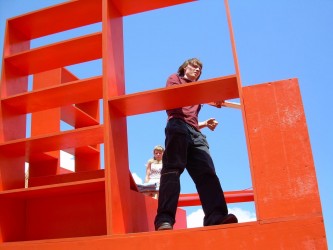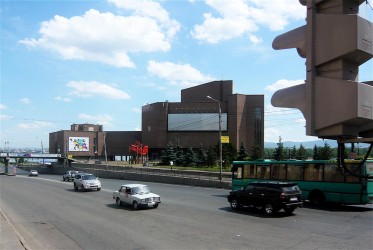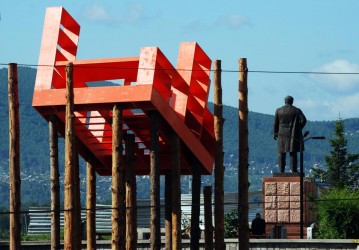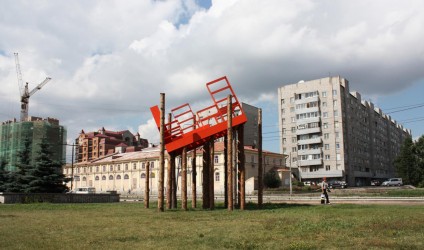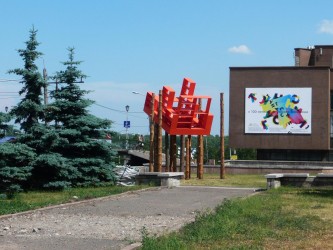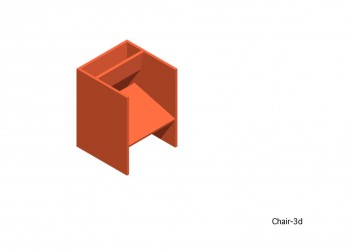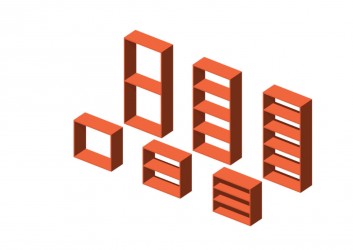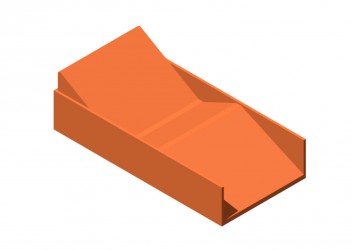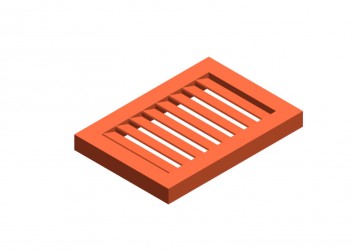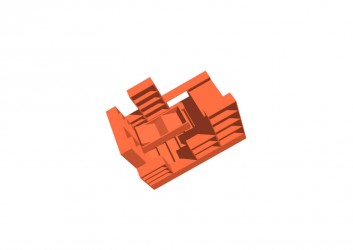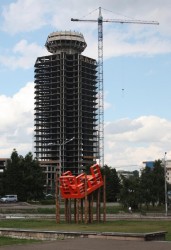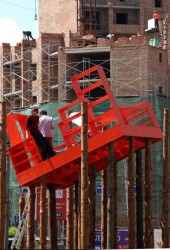A sloping study cell with chaise longue, bookcases and a lectern, on a foundation of 14 tree trunks, alongside a museum showing an exhibition on the mythology of the world's greatest meteor impact in the earth's recent history, the Tunguska impact.
STANDSTILL AND MOVEMENT
Space for speed is always surrounded by slow space. These spaces are usually separated as much as possible. Observatorium promotes sculpture that links these spaces together and creates opportunity for observation.
Invitation
"Dear Observatorium, could you give a reflection of the Siberian vertical after scanning the Dutch horizontal in Heino". Sergey Kovalevsky, a curator at the Cultural Historical Museum Complex in Krasnoyarsk, Siberia, had happened on some photographs of Villagescape in Heino on the internet. Seeing the observation post gave him the idea of inviting Observatorium to work in Krasnoyarsk and to take part in the Tunguska Phenomenon exhibition. He asked specifically for "a pavilion on the area near our museum from which it is possible to see the sky, with a centenary trace of light of a mysterious space body." The year 2008 marked the one hundredth anniversary of the famous Tunguska impact, when an area of Siberian taiga forest measuring over 2,000 square kilometres was flattened by the blast. Huge amounts of matter spread into the upper atmosphere, scattering so much light that Londoners could read The Times in the street at night. Most accounts of the event describe it as the impact of a meteorite or asteroid, although no fragments have ever been found; more recent analyses point towards a comet exploding in the atmosphere. The longer the event recedes into the past, the more conjectures and stories circulate about it.
Meteor
The organizers in Krasnoyarsk wished to hold a scientific symposium and an art exhibition to highlight the effect of the Tunguska event on culture and beliefs. The museum of the city of Krasnoyarsk, designed by the architect A.S. Demirkhanov, looks like an enormous red meteor that has landed on a steep riverbank, at the place where the first wooden houses and palisades of the original fort of Krasnoyarsk once stood. On completion in 1987, the museum was dedicated entirely to the honour of Lenin. Within a few years it had turned into a gallery for contemporary art, and was holding an international biennial. The building is a hexagonal behemoth sunk partly into the ground, with staircases that pass underneath it and lead to the river. It has few windows and the gallery spaces are disposed around a huge atrium. The museum is surrounded by a small park, which is connected to the central shopping street Mira by a bridge over the city motorway. A visitor will be struck by two strange discrepancies – a contrast between the museum's prominent site by the river and its isolation due to the motorway, and another between its brooding exterior and the wealth of architectural invention in its interior.
Siberian sky
The commissioned work was to be a pavilion for observing the Siberian sky that exploded one hundred years ago. Observatorium quickly found a fitting location, with maximum visibility from the highway and surrounding buildings, with the museum in the background. The city planner had imposed rigorous boundaries here, and there is something to be said for having a museum with a leisure park and its statuary separated from the busy traffic. However, the building and its surroundings, which are of so much of interest when viewed from nearby, make a purely lifeless impression in the few seconds available to a passing motorist. Observatorium did not wish the pavilion to have the effect of drawing more attention to the museum; their aim was to give balanced recognition to fast and slow perception.
location: Cultural Historical Museum Complex, Krasnoyarsk
year:2008
images:
